The time and effort required to grease your motorcycle will result in a more pleasant, safer ride – and more cash in your pocket when the time comes to sell.
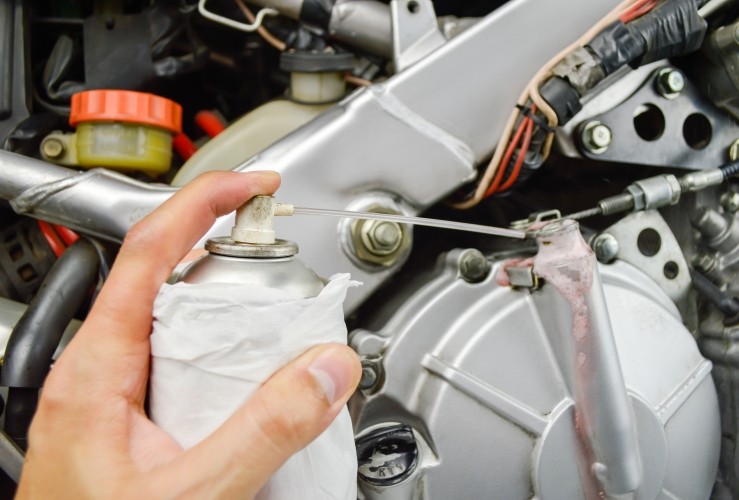
Why should I grease my motorcycle?
Of all motorbike maintenance tasks, lubing is one of the most neglected. Yet regular, comprehensive motorcycle greasing will keep its moving parts in good working order for much longer, saving you time, hassle and money.
A well-lubricated motorcycle will also retain its value much better – since it won’t be covered in rust.
The UK's inclement weather makes lubricating your motorcycle even more important. But even if you live in a drier part of the country, simply using your bike on a regular basis means moving parts need frequent TLC – i.e. motorbike grease.
Which parts of my bike should I lubricate?
Zero-in on your operating cables, since lubing them will keep your bike feeling fresh, afford you better control and optimise cable longevity. Your clutch will also last longer if it is regularly lubricated. Likewise, gear change assemblies and brake lever pins will work to their full capacity when well-greased, making riding more pleasurable.
Won't dealer services include these jobs?
Not always. While many lubrication tasks are listed on service schedules, some are not. Others may simply come under 'inspect', or be overlooked entirely.
Getting the right motorcycle lubricants: What motorcycle lubricants do you need?
The following is a list of motorcycle grease/oil types and what bike parts you should target with them.
Copper grease
Use motorcycle copper grease for most chassis applications, including fasteners and exhaust clamps, as well as protecting screw threads and adjusters against corrosion.
Softer grease
Softer grease is ideal for constantly moving parts such as the gear shift mechanism, brakes and bearings.
Spray grease
Motorcycle spray grease should be used for hard-to-reach parts like lever pivots and clevis pins.
Protective sprays with additives like PTEE
Protective sprays with additives are perfect motorcycle lubricants for cables.
Let's get lubricating....
Let’s take a look at how you should use motorcycle grease and motorcycle oils to lubricate different parts of your bike.
Brake callipers
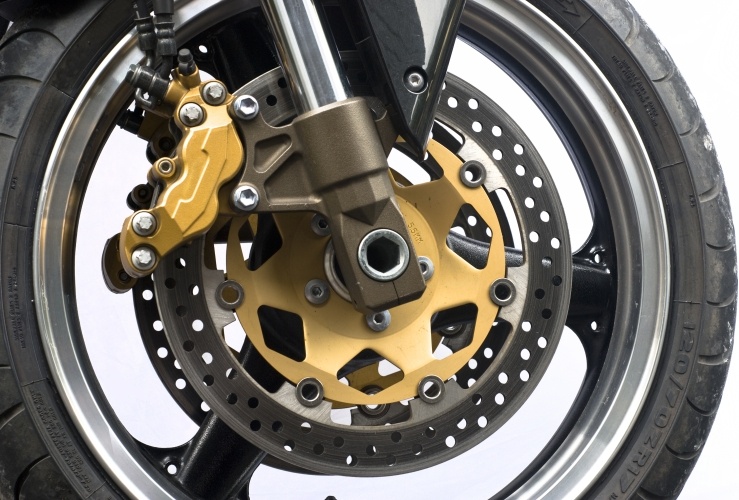
Road salt can get into callipers with ease, causing corrosion. Performance will be hit if they seize, causing damage to pads and discs.
Applying grease to your motorcycle can help prevent corrosion.
Apply copper grease to the calliper pins, piston bodies and pad backing material. Once done, you'll find that removing dust is a lot easier.
Protect disc and pads by wiping off any excess motorcycle grease.
Fasteners
The thread is often exposed on fasteners, particularly those with securing lock nuts. If the thread corrodes, the nuts will be very hard to remove.
Apply a thin coat of copper grease with a paint brush.
Examine your bike for all exposed threads – and don’t forget the exhaust studs.
Folding pegs
Lubricating your motorbike's folding pegs will ensure they can hinge up, preventing them from being damaged in any collision.
Work them up and down as you lube the hinge.
Don’t forget to grease your motorcycle pillion pegs.
Keyholes
Alongside your ignition key hole, you should lube your fuel cap, seat-catch keyholes and pannier locks – if you have them. Squirt light oil spray into each lock.
Drive chain
Of course it’s important to lube your drive chain, but in order to prolong its life you need to clean it regularly too.
Remove dirt and grime with paraffin and a paintbrush, then reapply lube.
This should be done at least every month – or much more regularly if you take your maintenance very seriously.
Suspension - front and rear
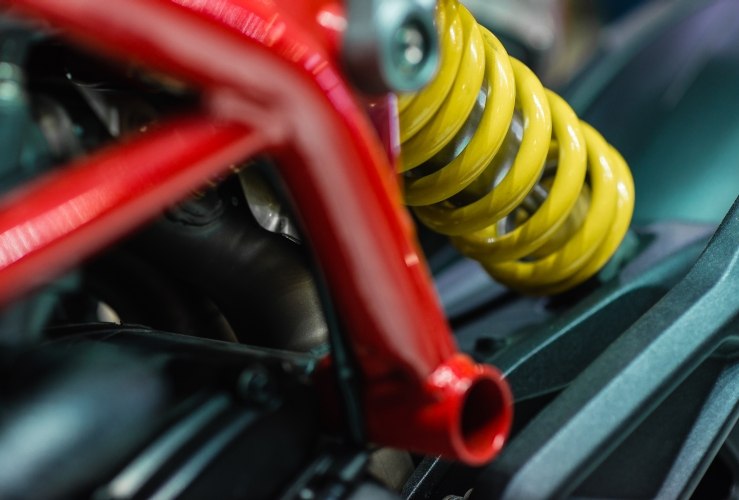
Surface water and rain are the prime enemies of these crucial components. Corrosion is particularly likely on the rebound adjusters atop fully adjustable forks.
While turning the adjusters, add a few drops of light engine oil.
Don't forget to leave the suspension just as you found it.
Clutch and brake lever pivot points
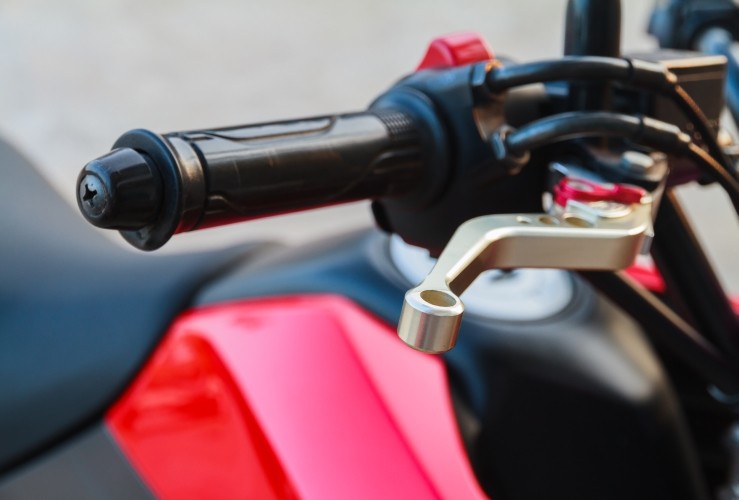
A squirt of motorbike grease can work wonders on these and help prevent pivot wear.
Chain lube is fine if you don't have spray grease. Regular grease for motorcycles will suffice but you should remove the lever first.
Clutch cable
Changing gear is tougher with a sticky clutch cable, so it's worth lubing it.
Remove it then tie it upright. Create a funnel from tape and place it around the inner cable, then pour in penetrating oil.
Make sure it has drained through by leaving it overnight.
Switch clusters
Protect the interior of your motorbike switch clusters by splitting them open and spraying with a water displacer like WD40.
Do the same to the throttle housing, filling the bottom part with light oil. Make sure the oil has made its way down by working the throttle.
Single shock rear suspension
This task requires a little extra work and is by no means easy, since you will need to strip them completely.
Coat bearings and bushes with light grease and apply the motorbike lubricant to securing bolts too – not leaving out the undersides of nuts and bolts.
Fasteners
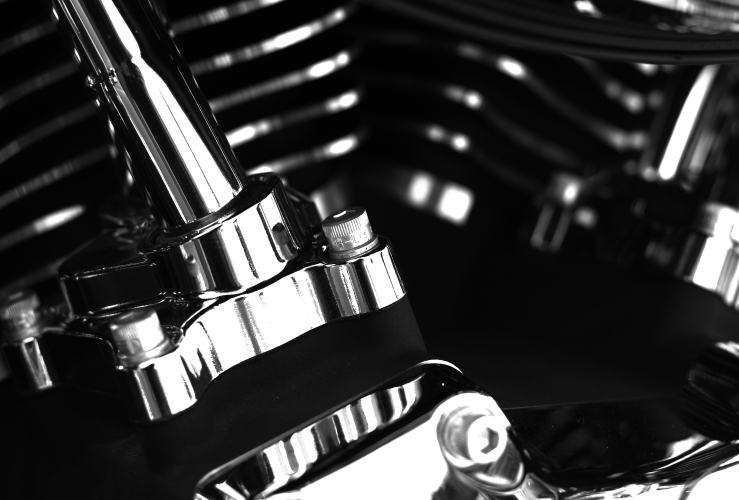
Remove every nut and bolt one at a time so as to keep any gaskets in place. Apply copper grease to the ends of the threads. The grease will work its way around the entire fastener evenly as it is screwed in.
Wheel spindles
These are often overlooked, but you should grease your motorcycle wheel spindles whenever tyres are changed or when they are removed and put back in for any other reason.
A thin layer of copper grease will suffice.




